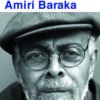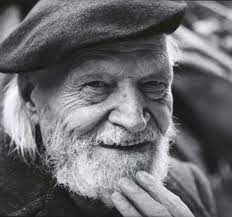
Esssay
Believing in the Sense of the Miraculous:
Clarence Wolfshohl and the Art of Poetry as Fine Letterpress
Review by Wally Swist
I want to offer my appreciation of Clarence Wolfshohl’s Coal Mine Landscape and Armadillos & Groundhogs and a few other of my neighbors, both lovely letterpress books bearing his master craftsman’s stamp of quality. Clarence published Timberline Press chapbooks in fine letterpress editions, at reasonable prices, from 1975 to 2010, from his Fulton, Missouri home. Since then, he has been issuing fine letterpress collections and an occasional broadside from his El Grito del Lobo Press, as if, after thirty-five years, he can’t quite separate himself from setting type and inking his handpress.
If that isn’t remarkable enough, what furthers one’s belief in the sense of the miraculous is that just before suffering a stroke which left him paralyzed on one side, and from which he is expected to recover, Clarence printed two more of his own books of poetry.
In Coal Mine Landscapes, printed specifically for the American Amateur Press Association (AAPA) in the winter and early spring of 2021, in an edition of only 170 copies, Clarence collects poems written when he taught at Fairmont State College and worked as a social worker in West Virginia from June 1969 through October 1970. He writes about this briefly in the collection’s Afterword, succinctly but eloquently:
“Those two jobs allowed me to observe a broad swath of the society, people high and people low.
The one constant in their lives was coal. Coal shaped the landscape, scarring it in some way. And for many who worked it, it scarred them. I saw such damaged people in detail as a social worker in Logan and Boone counties. The damaged terrain I saw throughout the state. However, there were also spots of beauty, sometimes verdant foliage concealing the abandoned gouges and rusted tipples of mines. These poems, most written during that time, attempt to show the duality.”
I particularly enjoyed “Salvage,” the collection’s final poem, in which Clarence depicts a landscape — at which we can only marvel — especially the opening lines, as we, as readers, dive into the water, along with the author, enjoying the rhythms, which are reminiscent of Seamus Heaney, with their nuanced interplay of consonance and assonance:
“We dove down to the bed
scattered with the talus of brickslide
from the lost town on the higher bank
of this deep hole on the Tygart Valley.
Down there the bricks lay like skulls
in green murk of woven water plants,
rounded by fire and flood,
currents sanding them smooth”
Another noteworthy poem is “Old Man at Bunner Ridge,” an adept portrait of a resident on “Sheepdog Trail,” whom Clarence captures, on film, as if he is a photojournalist, in these lines, with echoes of Robert Creeley’s truncated, but effective, syntax:
“master’s hands signal
toward sheep nose to nose
with old man
stopped in his parabolas”
However, “Ellie’s TD Celebration,” the penultimate poem, is also necessary to mention due to its range and depth, and making something fairly ordinary, such as a pickup football game, not only extraordinary for the reader but a sociological insight into “West,” as West Virginia is known by West Virginians.
I just loved the size of the collection, too, measuring just 4 ½” x 6”. Coal Mine Landscape is a nifty and arty book, and a rare blend of what I term the happy marriage of aesthetics and utility.
With respect to Armadillos & Groundhogs and a few other of my neighbors, its being populated by the wild is certainly attractive to me, but it is the diversity of flora and fauna that makes the collection inviting. There is much to admire here, but “The Wisteria” is an early favorite. I love the way the years both make the poem and make the poet’s patience in discovering, and not waiting for, “this spring day,/ a full tree of its own, royal with blossoms.” This is a “broadside poem” in my mind, a poem — one that deserves to be seen when our eyes glance over it, framed and hanging on a wall — to more fully revel in and savor a line as memorable as the one above.
I also enjoyed “The Witness” and its lingering sense of mystery. Rilke indicates we should live out the questions before trying to answer the questions, but I believe we need to respect “mystery” and reserve our inclination to solve, see, or fathom anything and everything. Leaving the “mystery” as is, and remaining mystified enhances our experience of the natural world. Although I am also very big on, as Snyder says, “learning the flowers” and “going light.” Without giving really anything away, Clarence writes about what it might be that emerges, in a flash:
“leaping from the trees
and seething in the rush.
He aims the flashlight
into the roaring woods
but sees only the whirlwind
of leaves, not even a glint
of antler from the echoing strikes.”
Although, “Wolf Tree” may be my favorite of this collection. It is well-crafted and resonant. It is crisp and clean as an axe splitting wood, and a fine example of what the art of poetry and fine printing can be:
“Paces away is the wall of the woods,
the wolf oak’s millions of siblings
stretch miles toward Missouri
bottomland. They spire upward, limbs
turned skyward toward the sun.
They grow straight, no blemish
of burl nor gnarl of wind.”
“Turkey Strut” is also memorable, as a neighbor hoists “the carcass/ from the pickup bed, clear of the bag/ it was wrapped in, and a loose sunray caught the bronze/ in an instant, last turkey strut.” And in “The Ride Home,” I can hear his love for his late wife, Patricia, whom I remember speaking with on the phone often when I called. She was such a fine woman. I could hear that in speaking with her. And I somehow see and hear her in this poem, too, especially when Clarence writes about joining in “the hymn of deer, of coyote, and of this snake/ rising from his dust hiss, lifting into the blue/ of a redtail’s distant peal.”
“The Fox Again” nicely rounds out the first sections, and the armadillos and groundhog section offers a fine coda to the collection as a whole, disappearing after we see it, and then leaving the color of its image to linger within us after it disappears again:
“He does this every year.
You’d remember if you were here
and not take a breath
until he trotted among the dogwood.”
As a whole, this book is a rather satisfying read, and reading it is a joy since it is so lovely to hold in the hands, issued in an edition of seventy-five numbered copies — on Neenah Environment paper for the text, with Wausau Royal Fiber for the endpapers, and bound in blue Strathmore Grandee covers, sewn by hand. Clarence Wolfshohl “handcrafted” the book “by letterpress from setting Old Style Garamond type” and printed the run on a 6.5 x 10 C&P Pilot, the colophon being a poem unto its own.
About the Author
 Wally Swist’s books include Huang Po and the Dimensions of Love (Southern Illinois University Press, 2012), Awakening & Visitation, and Evanescence: Selected Poems (2020), with Shanti Arts.
Wally Swist’s books include Huang Po and the Dimensions of Love (Southern Illinois University Press, 2012), Awakening & Visitation, and Evanescence: Selected Poems (2020), with Shanti Arts.
His translations have been and/or will be published in Chiron Review, Ezra: An Online Journal of Translation, The RavensPerch: Adding Breadth to Word, Solace: A Magazine of Diverse Voices, Transference: A Literary Journal Featuring the Art & Process of Translation, (Western Michigan Department of Languages), and Woven Tale Press.
His latest book of essays, A Writer’s Statements on Beauty: New & Selected Essays & Reviews will be published in 2022 by Shanti Arts.



